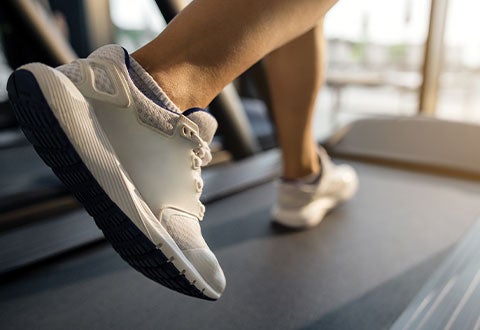
Exercise Treadmill Test (ETT) - a running test on a stationary treadmill machine, is a common investigation used to evaluate cardiac conditions such as ischaemic heart disease and heart rhythm issues. While ETT is widely known to many, another assessment - Cardiopulmonary Exercise Test, or CPET, is less common. NHCS is one of the few institutions in Singapore that has CPET capability for advanced cardiorespiratory assessment of patients.
By Dr Koh Choong Hou, Consultant, Department of Cardiology
What is Cardiopulmonary Exercise Test (CPET)?
A CPET is conventionally performed like an ETT, with additional components integrated to provide a deeper analysis into the exercise related physiological performance of the heart, lung, circulation and muscle systems of the body. These include:
Resting spirometry, which comprises supervised breathing into a lung function machine to measure basic lung function parameters;
Exercise phase – either via a treadmill facilitated run, or a stationary bicycle that comes with an attached air tight mask to record inhaled and exhaled gases during physical exertions, and a pulse oximeter probe attached to the finger or ear lobe, to determine oxygen saturation levels during the test.
Similar to a standard ETT set up, electrocardiogram (ECG) and blood pressure monitoring are also simultaneously performed to assess the patient’s response to exercise in terms of heart electrical activities, heart rate, and blood pressure rise.

A typical set up for a treadmill CPET (left) compared to a bicycle CPET (right).
Most individuals who are able to run to a comfortable and adequate level of intensity will be assigned to treadmill CPET, as their response to this modality largely mirrors their normal activities. For those who are unable to run due to significant back or lower limb musculoskeletal issues, or with unsteady gait problems, they will be assigned to bicycle CPET, which is a recent new addition to the current treadmill CPET assessment NHCS offers.
For selected group of individuals such as amateur and professional cyclists who are keen to specifically measure their exercise response on bicycle stress or whose exercise workload is critical for clinical decision making, a bicycle CPET will be performed. The new bicycle CPET not only provides clinicians an option to better assess patients, the ease-of use also offers a better patient experience, especially for the senior patients. The key differences between a bicycle CPET versus a treadmill CPET is summarised below.
Bicycle CPET | Treadmill CPET |
|---|---|
Less movement artefacts hence more accurate ECG and blood pressure measurements | Movement artefacts that may affect ECG and blood pressure measurements |
Low risk of falls | Risk of falls |
More acceptable to most demographics and patient profiles | May be more intimidating, especially to the sedentary or elderly population |
Quieter | Noisier |
More controlled measurement of workload | Less controlled measurement of workload |
Gradual and smoother increase in exercise stress level during the test | Certain protocols may necessitate a significant jump in stress levels during change in stages |
Who needs a CPET?
Many physiological parameters to exercise stress can be derived from a CPET session, such as peak oxygen consumption (VO max), anaerobic threshold, exercise capacity, lung function limitations, or potential underlying muscular or circulatory insufficiencies. Hence the value of CPET in evaluating patients with underlying heart, lung, muscle or circulatory conditions can be very useful. In general, the CPET is beneficial for:
Evaluation for exertional breathlessness
Objective assessment of cardiorespiratory fitness in athletes
Tailoring an exercise prescription
Risk stratification and prognostication in patients with heart failure
Assessing patients with congenital heart disease for treatment response or pre-surgical intervention
Determining functional limitations from cardiac valvular or electrical conditions
How is the test conducted in NHCS?
CPET sessions are conducted in a safe and controlled environment within the NHCS Cardiac Rehabilitation Unit, and each session typically involves a CPET trained nurse and a cardiologist. Patients are advised to dress in comfortable and appropriate exercise gear and footwear for the test, and to stay well hydrated on the day of the test. If unwell, patients are advised to postpone the session. A screening questionnaire will be administered before the CPET to screen for contraindications to the test, following which resting spirometry will be performed. Next, there will be fitting of the specialised CPET face mask, attachment of the ECG leads, pulse oximeter and blood pressure cuff. The exercise phase is monitored
real-time by the CPET cardiologist and nurse, and entire process is expected to take between 30-45 minutes for each patient.
Conclusion
Cardiopulmonary Exercise Test is a highly useful tool for evaluation of cardiovascular conditions, undifferentiated cardiac symptoms, and assessment of overall cardiorespiratory fitness. Patients who are keen to find out more about their eligibility for the test may speak to their cardiologists.
References
This article is from Murmurs Issue 42 (January – April 2022). Click here to read other articles or issues.













 Get it on Google Play
Get it on Google Play